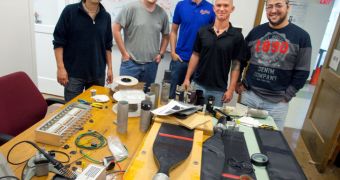Southern Arkansas University professor Abdel Bachri and his students are now in their second year when they visit the US Department of Energy's (DOE) Lawrence Berkeley National Laboratory (Berkley Lab). During the first summer they spent at the facility, the Arkansas team constructed a portable cosmic ray detector, using equipment unavailable at their university. They returned to SAU with the only cosmic ray detector in the state. Now in their second year at Berkley Lab, the students and their teacher are looking for the neutrino-less double decay, one of the rarest decays in nature.
The SAU group is working together with Berkeley Lab expert physicist Azriel Goldschmidt on achieving this goal. This line of investigation has the potential to bring a Nobel Prize in physics for the team that cracks the mystery surrounding this elusive decay. Still, even if they don't win the prestigious scientific award, the experts (and future experts) involved in the Berkeley Lab study will gain a large amount experience in particle physics. Basically, what the group is trying to do is confirm the phenomenon, an achievement that many physics group around the world are striving for.
“It’s very, very exciting that we have a chance to work with these people on an experiment such as this,” says Perry Grant, a SAU student. “If the Berkeley Lab scientists are the ones that prove that this happens, we can sit at home and watch the Nobel Prize ceremony and say, ‘that was us',” adds SAU student Clayton Martin. Both students are seniors majoring in physics at the university. They are spending the summer (10 weeks) at the DOE lab together with fellow student Martin Hawron and Bachri, who is their physics professor.
“When I first came to [Southern Arkansas] university, I realized the students needed better infrastructure to do more meaningful experimental research. I came to learn about the FaST [Faculty and Student Teams] program, which allows me to bring a team and use the intellectual resources of Berkeley Lab, so of course I couldn’t resist that,” Bachri says. “It’s exciting to see them learn and get excited about new things – that’s my main motivation. Also, the FaST program is geared towards institutions that are at a disadvantage, so we’re taking folks from very different backgrounds and putting them here, which is at the forefront of science. They come in touch with a lot of stuff they otherwise would not have had the opportunity to do,” Goldschmidt concludes.

 14 DAY TRIAL //
14 DAY TRIAL //